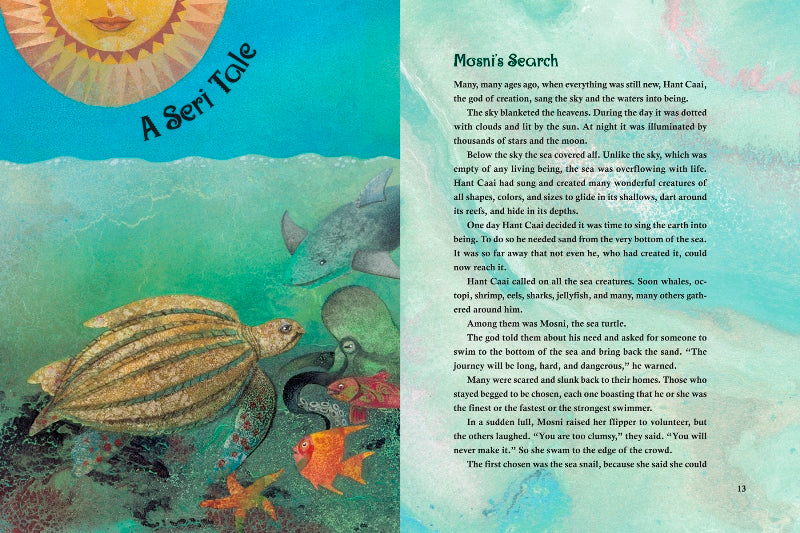Whiskers, Tails, & Wings

Judy Goldman, author
Judy Goldman is the author of many children's books, both in English and in Spanish, including De astutos, tragones y mordelones and Uncle Monarch and the Day of the Dead. She lives in Mexico City, Mexico.
Read more about Judy.
Fabricio VandenBroeck, illustrator
Fabricio VandenBroeck has illustrated many books for children, for publishers in the United States and in Mexico. Among his works are Under the Mambo Moon, The Witch's Face by Eric Kimmel (Holiday House), Once When the World Was Green by Jan Wahl (Ten Speed Press), and Torch Fishing with the Sun by Laura E. Williams (Boyds Mills Press). He lives in Mexico City, Mexico.
Read more about Fabrico.
- Aesop Accolade
- Storytelling World Award Honor Book, Storytelling Collections
- New York Public Library Children's Books 100 Titles for Reading and Sharing
- Anne Izard Storyteller's Awards
- International Latino Book Award - Best Youth Latino Focused Chapter Book 2nd Place
Kirkus Reviews, starred review
Five animated, traditional tales are enhanced by ethnographic information about the indigenous peoples who still tell these stories.
The author has selected tales not from the well-known Aztec or Mayan tradition, but from the Tarahumara, Seri, Huichol, Triqui and Tseltal peoples. Each short tale is followed by a description of the group's traditional customs and their contemporary lives, including their use of cars and computers (and, in the Huichol chapter, ceremonial peyote by chosen adults). The stories attest to the ingenuity of the cricket, Señor Grillo, over the force of Señor Puma's army and to the steadfastness of Mosni, the sea turtle, whose journey to bring sand from the ocean floor enabled Hant Caai, the Seri god of creation, to create land that humans would inhabit. The Huichol story explains why the opossum has a bare but prehensile tail. The humorous Triqui tale describes insects invented by their god of creation to make Man and Woman do some real work, and the last story recounts the scary encounter between a large buzzard and a small frog. The book is handsomely designed, with full-bleed acrylic-and-watercolor paintings on heavily textured papers starting off each story. Realistic vignettes emphasizing folk art and intricate clothing illustrate the informational sections. Comprehensive glossaries (with pronunciation guides) accompany each story, and a scholarly bibliography and index round out the volume.
One of the most satisfying folklore collections in recent memory.
Publishers Weekly
Goldman’s selection of Mexican folktales from five indigenous groups includes trickster tales, origin stories, and brief narratives about the triumphs of unconventional heroes. In a story from the Triqui people, the God of Creation creates the irritating flea in order to prevent Man and Woman from lying about lazily; a story from the Huichol tribe tells how the opossum lost its tail hair. After each story, Goldman explores its culture of origin in detail, while glossaries identify local words and expressions. VandenBroeck opens each tale with a handsome acrylic-and-watercolor paintings, though the stories themselves unfold in large blocks of uninterrupted text, set against textured paper; spot illustrations give visual detail about the different native groups, particularly their attire. An intriguing introduction to Mexico’s rich mythologies.
School Library Journal
This well-crafted resource offers folktales from five indigenous peoples of Mexico. Each tale is accompanied by an overview of the group's culture and history and a glossary. The Tarahumara tale, "When Señor Grillo Met Señor Puma," is a classic story of a feisty cricket who outsmarts an arrogant puma and his friends. In the Seri tale, "Mosni's Search," a patient sea turtle is the last animal chosen by the god of creation to retrieve sand from the sea bottom, and she is ultimately the one who succeeds. The Huichol tale, "Tlacuache's Tail," features an opossum that steals fire to share with the people and in the process winds up with a hairless, burnt tail. He finds he can use it for hanging upside down, and his resourcefulness is celebrated. The Triqui people live in the Oaxacan region; their tale, "Ouch!" celebrates the lowly flea and tells why he was created. The Tseltal live in the Chiapas region, and they are part of the Mayan ethnic group. "Pokok Up High" relates what happens when a frog asks a vulture to carry him aloft. The tales are straightforward and lively, and this novel approach to cultural studies should prove welcome and useful. The richly detailed illustrations, done in acrylics and watercolor on custom paper and completed digitally, add to the book's appealing design.
Library Media Connection
Judy Goldman introduces the reader to Mexico and presents five tales from the lesser-known indigenous groups. Stories range from a cricket defeating a puma to the creation of fleas in order to encourage man and woman to work hard every day. Each folktale is short enough for students of all ages. Similar in design to a Social Studies textbook, sections describe the various cultures in which each story originated, discussing the land, people, language, way of life, and importance of the story. This would be a great tool for exploring and comparing folklore and culture around the world. It can be used in prompting students to create their own stories or investigate the stories of their heritage, or participate in storytelling performances. The painted illustrations contribute to the native feel of the book. Helping reader to understand the people of Mexico, this book fosters a greater appreciation of all groups.
Paperback
ISBN: 978-1-58089-373-2
Ages: 8-11
Page count: 64
Correlated to Common Core State Standards:
(College and Career Readiness) Reading Literature. Grades 3 to 6. Standards 1 to 7, 9, and 10.





